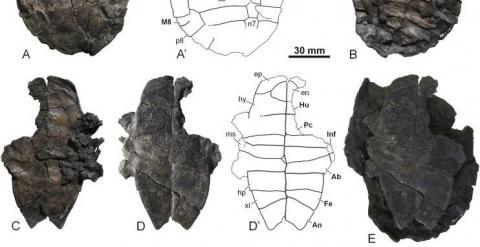 |
El pasado 6 de Marzo encontré 8 ejemplares de Rana patilarga (Rana iberica) – 3 adultos y 5 juveniles – en un pequeño pilón situado a unos 10-12 metros de un arroyo y en el término municipal de Luena (Cantabria). Con las lluvias y las nevadas de las últimas semanas, los ríos y arroyos están muy crecidos y las ranas han aprovechado este cercano pilón para estar más a gusto mientras el caudal vuelve a su nivel habitual. Leer más. |





 |
Paleontólogos de Teruel y de la UNED han descubierto los fósiles de una nueva especie de tortuga de agua dulce, a la que han puesto el nombre científico de «Toremys cassiopeia» y que sería la tortuga pleurosténida más moderna del registro mundial. Leer más. |
Petersen, Chris (2010): Naval Station Rota reptile and amphibian survey. Naval Facilities Engineering Command Atlantic, Dataset #843857 (DOI registration in progress). Ir al enlace.
 |
La zona que exhibía huevos de dinosaurio en el yacimiento musealizado del Mirador del Cretáceo, en Coll de Nargó, Lleida, el más grande recuperado de Europa, apareció ayer por la tarde completamente destrozada por una acción vandálica que dañó todos los restos de huevos hallados. Según ha informado el Instituto Catalán de Paleontología Miquel Crusafont (ICP), el ataque fue descubierto durante una visita rutinaria por Àngel Galobart, jefe del grupo de investigación del Mesozoico del centro, que dio el aviso al Departamento de Cultura de la Generalitat y al Ayuntamiento de Coll de Nargó. Leer más. |
A review of the taxonomic status of the Asian Slug Snake, Asthenodipsas vertebralis (Boulenger, 1900) based on an in-tegrative taxonomic approach using molecular, morphological, color pattern, and ecological data indicate it is composed of three well supported monophyletic lineages: (1) Pulau Tioman and Fraser’s Hill, Pahang and Bukit Larut, Perak; Pen-insular Malaysia; (2) its sister lineage from Northern Sumatra; and (3) the remaining basal lineage from Peninsular Malaysia. Leer más.






